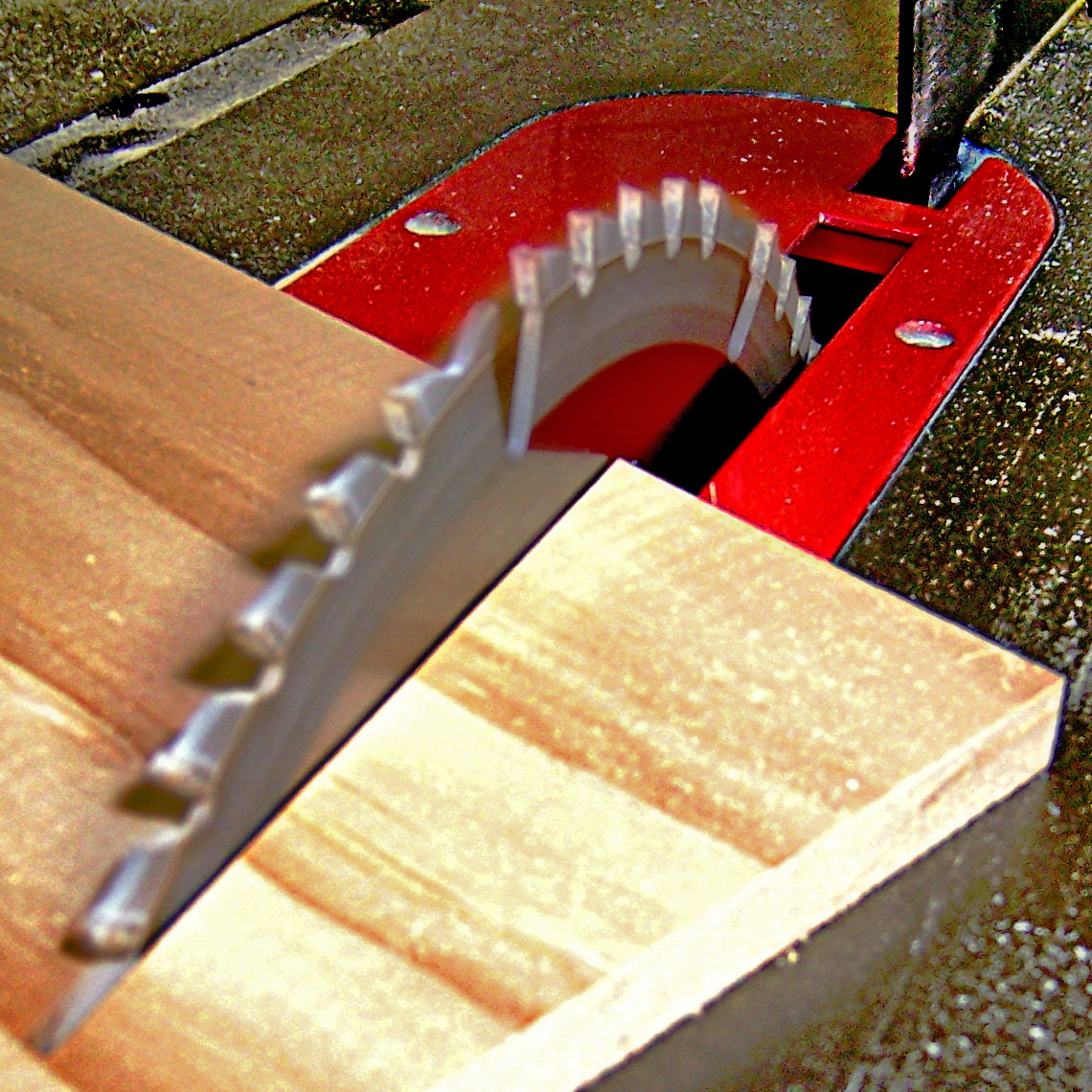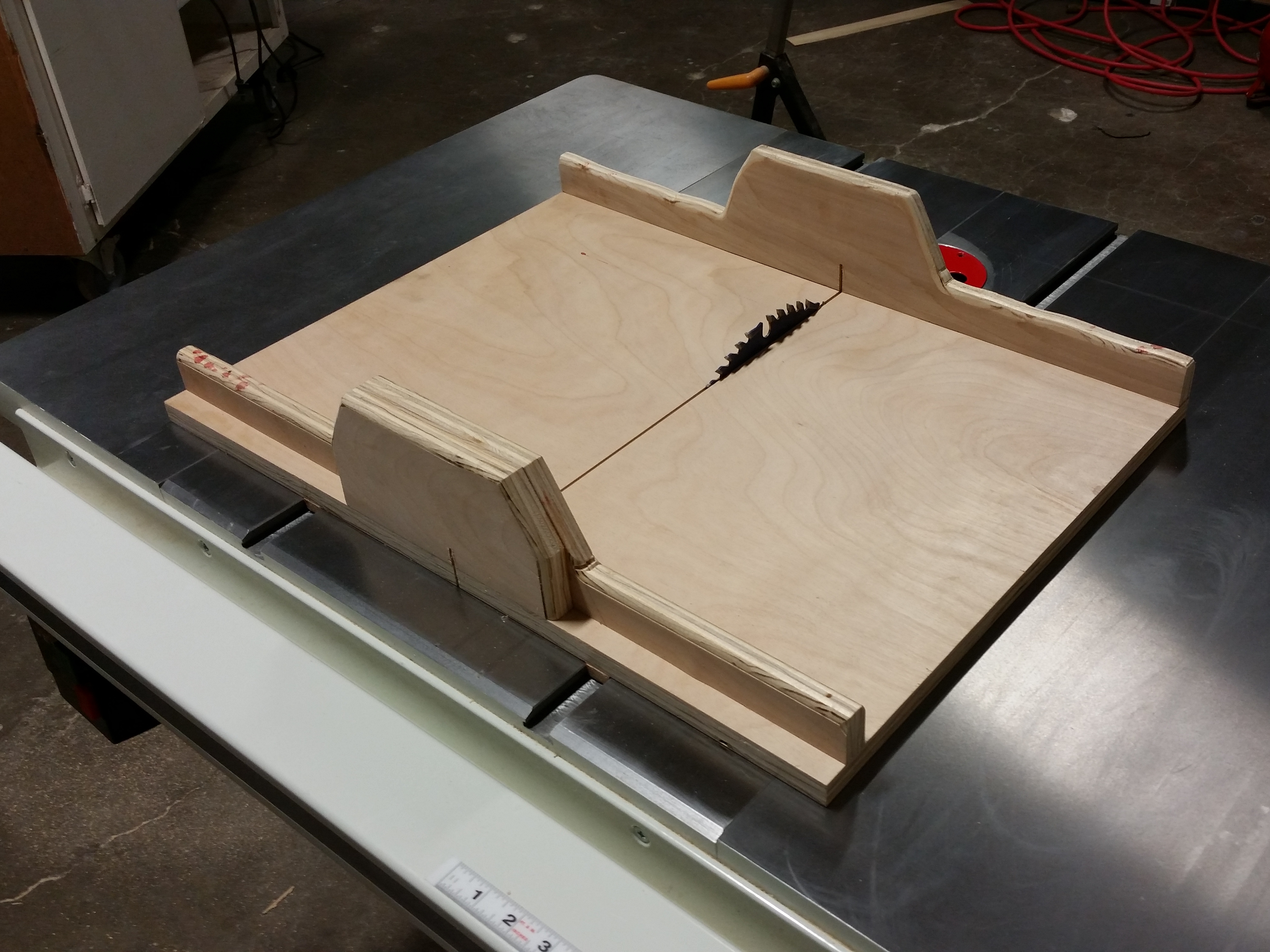|
T-square
A T-square is a technical drawing instrument used by draftsmen primarily as a guide for drawing horizontal lines on a drafting table. The instrument is named after its resemblance to the letter T, with a long shaft called the "blade" and a short shaft called the "stock" or "head". T-squares are available in a range of sizes, with common lengths being , , , and . In addition to drawing horizontal lines, a T-square can also be used with a set square to draw vertical or diagonal lines. The T-square usually has a transparent edge made of plastic which should be free of nicks and cracks in order to provide smooth, straight lines. T-squares are also used in other industries, such as construction. For example, drywall T-squares are typically made of aluminum and have a long tongue, allowing them to be used for measuring and cutting drywall. In woodworking, higher-end table saws often have T-square fences attached to a rail on the front side of the table, providing improved accuracy ... [...More Info...] [...Related Items...] OR: [Wikipedia] [Google] [Baidu] |
Technical Drawing
Technical drawing, drafting or drawing, is the act and Academic discipline, discipline of composing Plan (drawing), drawings that Visual communication, visually communicate how something functions or is constructed. Technical drawing is essential for communicating ideas in Manufacturing, industry and engineering. To make the drawings easier to understand, people use familiar symbols, Perspective (graphical), perspectives, units of measurement, notation systems, visual styles, and page layout. Together, such Convention (norm), conventions constitute a visual language and help to ensure that the drawing is unambiguous and relatively easy to understand. Many of the symbols and principles of technical drawing are codified in an international standard called ISO 128. The need for precise communication in the preparation of a functional document distinguishes technical drawing from the expressive drawing of the visual arts. Artistic drawings are subjectively interpreted; their meanin ... [...More Info...] [...Related Items...] OR: [Wikipedia] [Google] [Baidu] |
Technical Drawing Tools
Drafting tools may be used for measurement and layout of drawings, or to improve the consistency and speed of creation of standard drawing elements. Tools such as pens and pencils mark the drawing medium. Other tools such as straight edges, assist the operator in drawing straight lines, or assist the operator in drawing complicated shapes repeatedly. Various scales and the protractor are used to measure the lengths of lines and angles, allowing accurate scale drawing to be carried out. The compass is used to draw arcs and circles. A drawing board was used to hold the drawing media in place; later boards included drafting machines that sped the layout of straight lines and angles. Tools such as templates and lettering guides assisted in the drawing of repetitive elements such as circles, ellipses, schematic symbols and text. Other auxiliary tools were used for special drawing purposes or for functions related to the preparation and revision of drawings. The tools used for manual ... [...More Info...] [...Related Items...] OR: [Wikipedia] [Google] [Baidu] |
Drafting Table
A drawing board (also drawing table, drafting table or architect's table) is, in its antique form, a kind of multipurpose desk which can be used for any kind of drawing, writing or impromptu sketching on a large sheet of paper or for reading a large format book or other oversized document or for drafting precise technical illustrations (such as engineering drawings or architectural drawings). The drawing table used to be a frequent companion to a pedestal desk in a study or private library, during the pre-industrial and early industrial era. During the Industrial Revolution, draftsmanship gradually became a specialized trade and drawing tables slowly moved out of the libraries and offices of most gentlemen. They became more utilitarian and were built of steel and plastic instead of fine woods and brass. More recently, engineers and draftsmen use the drawing board for making and modifying drawings on paper with ink or pencil. Different drawing instruments (set square, protracto ... [...More Info...] [...Related Items...] OR: [Wikipedia] [Google] [Baidu] |
Drafting Board With T Square
Drafting or draughting may refer to: * Campdrafting, an Australian equestrian sport * Drafting (aerodynamics), slipstreaming * Drafting (writing), writing something that is likely to be amended * Technical drawing, the act and discipline of composing diagrams that communicates how something functions or is to be constructed. E.g.: ** Architectural drawing ** Electrical drawing ** Engineering drawing ** Plumbing drawing ** Structural drawing ** Textile manufacturing weaving pattern * Conscription into compulsory military service ** Draft (sports), where new players are chosen by the teams rather than the players choosing their teams * Drafting, a hand spinning method of preparing fibers for spinning into yarn * Drafting dog A drafting dog, pulling dog, or draft dog (also spelt draught dog) is a dog bred and traditionally used for pulling a dogcart, or in winter also for sled pulling. Dogs bred for this work have strong builds. Many draft dogs are either mastiffs ..., a ... [...More Info...] [...Related Items...] OR: [Wikipedia] [Google] [Baidu] |
Plan (drawing)
Plans are a set of technical drawing, drawings or two-dimensional diagrams used to describe a Location (geography), place or Object (philosophy), object, or to communicate building or Manufacturing, fabrication instructions. Usually plans are drawn or printed on paper, but they can take the form of a digital file. Plans are used in a range of fields: architecture, urban planning, landscape architecture, mechanical engineering, civil engineering, industrial engineering to systems engineering. The term "plan" may casually be used to refer to a single view, sheet, or drawing in a set of plans. More specifically a plan view is an orthographic projection looking down on the object, such as in a floor plan. Overview Plans are often for Technology, technical purposes such as architecture, engineering, or urban planning, planning. Their purpose in these disciplines is to accurately and unambiguously capture all the geometric features of a site, building, product or component. Plans ... [...More Info...] [...Related Items...] OR: [Wikipedia] [Google] [Baidu] |
Measuring Instrument
A measuring instrument is a device to measure a physical quantity. In the physical sciences, quality assurance, and engineering, measurement is the activity of obtaining and comparing physical quantities of real-world objects and events. Established standard objects and events are used as units, and the process of measurement gives a number relating the item under study and the referenced unit of measurement. Measuring instruments, and formal test methods which define the instrument's use, are the means by which these relations of numbers are obtained. All measuring instruments are subject to varying degrees of instrument error and measurement uncertainty. These instruments may range from simple objects such as rulers and stopwatches to electron microscopes and particle accelerators. Virtual instrumentation is widely used in the development of modern measuring instruments. Time In the past, a common time measuring instrument was the sundial. Today, the usual measuring instrum ... [...More Info...] [...Related Items...] OR: [Wikipedia] [Google] [Baidu] |
Transparency And Translucency
In the field of optics, transparency (also called pellucidity or diaphaneity) is the physical property of allowing light to pass through the material without appreciable scattering of light. On a macroscopic scale (one in which the dimensions are much larger than the wavelengths of the photons in question), the photons can be said to follow Snell's law. Translucency (also called translucence or translucidity) allows light to pass through, but does not necessarily (again, on the macroscopic scale) follow Snell's law; the photons can be scattered at either of the two interfaces, or internally, where there is a change in index of refraction. In other words, a translucent material is made up of components with different indices of refraction. A transparent material is made up of components with a uniform index of refraction. Transparent materials appear clear, with the overall appearance of one color, or any combination leading up to a brilliant spectrum of every color. The opposit ... [...More Info...] [...Related Items...] OR: [Wikipedia] [Google] [Baidu] |
Plastic
Plastics are a wide range of synthetic or semi-synthetic materials that use polymers as a main ingredient. Their plasticity makes it possible for plastics to be moulded, extruded or pressed into solid objects of various shapes. This adaptability, plus a wide range of other properties, such as being lightweight, durable, flexible, and inexpensive to produce, has led to its widespread use. Plastics typically are made through human industrial systems. Most modern plastics are derived from fossil fuel-based chemicals like natural gas or petroleum; however, recent industrial methods use variants made from renewable materials, such as corn or cotton derivatives. 9.2 billion tonnes of plastic are estimated to have been made between 1950 and 2017. More than half this plastic has been produced since 2004. In 2020, 400 million tonnes of plastic were produced. If global trends on plastic demand continue, it is estimated that by 2050 annual global plastic production will reach over 1, ... [...More Info...] [...Related Items...] OR: [Wikipedia] [Google] [Baidu] |
Table Saw
A table saw (also known as a sawbench or bench saw in England) is a woodworking tool, consisting of a circular saw blade, mounted on an arbor, that is driven by an electric motor (either directly, by belt, or by gears). The blade protrudes through the top of a table, which provides support for the material, usually wood, being cut. In most modern table saws, the depth of the cut is varied by moving the blade up and down: the higher the blade protrudes above the table, the deeper the cut that is made in the material. In some early table saws, the blade and arbor were fixed, and the table was moved up and down to expose more or less of the blade. The angle of cut is controlled by adjusting the angle of blade. Some earlier saws angled the table to control the cut angle. Types The general types of table saws are compact, benchtop, jobsite, contractor, hybrid, cabinet, and sliding table saws. Benchtop Benchtop table saws are lightweight and are designed to be placed on a table o ... [...More Info...] [...Related Items...] OR: [Wikipedia] [Google] [Baidu] |
Fence (woodworking)
A fence is a part of many woodworking tools, they are typically used to guide or secure a workpiece while it is being sawn, planed, routed or marked. Fences play an important role for both accuracy and safety. Fences are usually straight and vertical, and made from metal, wood or plastic. Most fences either remain static with the workpiece guided along it, or are moved relative to the blade. Auxiliary and a sacrificial fences An auxiliary or sacrificial fence is a fence made of a material not liable to damage the blade – such as wood or plastic – and is usually attached to an existing fence. Such a fence may be used for situations where it is desirable or necessary for the fence to be in contact with, or particularly close to, the blade. They may also be used for attaching accessories to the fence, such as stop blocks and featherboards. Zero-clearance sacrificial fences can also be used to make cleaner cuts. Such fences may be considered sacrificial as they will be cut into ... [...More Info...] [...Related Items...] OR: [Wikipedia] [Google] [Baidu] |








